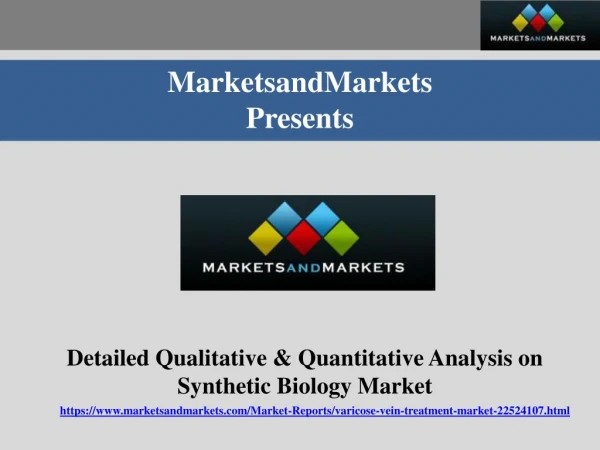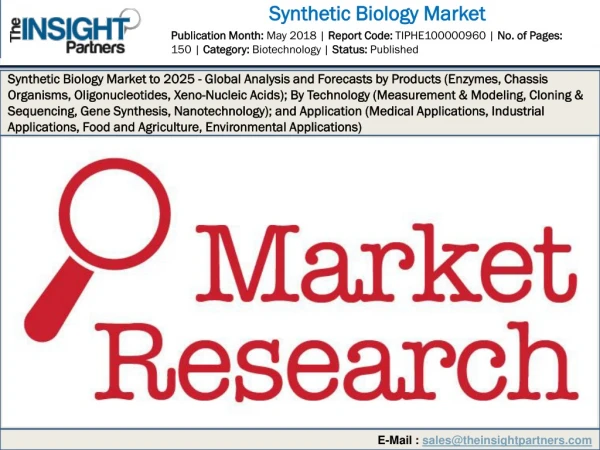Detailed Qualitative & Quantitative Analysis on Synthetic Biology Market
The global synthetic biology market is projected to reach USD 8.84 Billion by 2022 from USD 3.57 Billion in 2017, at a CAGR of 19.9%. This high growth rate can be attributed to the wide range of applications of synthetic biology, rising R&D funding and initiatives, increasing demand for synthetic genes and synthetic cells, and increasing investments in synthetic biology companies. Factors such as rising concerns regarding fuel consumption and increasing demand for protein therapeutics are expected to offer lucrative opportunities for players in the global market. In this report, the global synthetic biology market is segmented on the basis of tool, technology, application, and region. Based on tools, the market is segmented into oligonucleotides, enzymes, cloning technology kits, chassis organisms, and xeno-nucleic acids. In 2017, oligonucleotides are expected to account for the largest share of the global market owing to the large-scale production of modified oligonucleotides for next-generation sequencing and the increasing market demand for synthetic genes. By technology, the synthetic biology market is segmented into gene synthesis, genome engineering, cloning and sequencing, next-generation sequencing, site-directed mutagenesis, measurement and modeling, microfluidics, and nanotechnology. In 2017, the gene synthesis segment is expected to account for the largest share of the global market in technology. This is attributed to the fact that the technology is used in a wide range of applications such as producing vaccines, engineering enzymes to restrict cancer growth, producing sustainable biofuels, improving crop yield, and detecting and breaking down environmental pollutants in the soil, air, and water offered by gene synthesis. The synthetic biology market is segmented into medical (pharmaceutical, drug discovery & therapeutics, and artificial tissue and tissue regeneration), industrial (biofuel & renewable energy, industrial enzymes, and biomaterials & green chemicals), food & agriculture, and environmental (bioremediation and biosensing) on the basis of application. The pharmaceuticals subsegment is expected to account for the largest share of the market. However, biofuel and renewable energy is expected to grow at the highest CAGR during the forecast period owing to the global demand for fossil fuel alternatives and the advantages of the genetically engineered organisms for the synthetic production of biofuels
★
★
★
★
★
163 views • 13 slides




